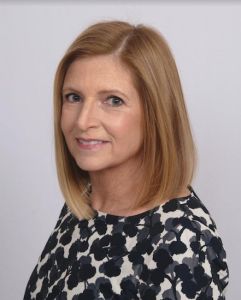Goldman Sachs’ CRE financing team is one that has perfected the delicate art of “go time” these past two years. As a result, the firm significantly increased its market share when others were sidelined and licking their wounds.
“Clients needed the best advice possible as to when to go to market [with a CMBS deal]and how to approach the market,” Siddharth Shrivastava, a managing director in the group, said. “We had a competitive advantage in that clients wanted to work with a seasoned team like ours during the volatility, versus in stable markets where every deal is getting done at very tight levels. We were able to gain market share and capitalize on the volatility out there through being advisers to our clients.”
Indeed, “nothing in the past few years was straightforward,” Steven Pack, another managing director, said. “Most people who decided to do a deal in the last few years had to do a deal. We pride ourselves on not taking an ask at its face value but instead by being really creative about solving for what the client needs. We aren’t just one pocket of balance sheet capital. There are tons of groups within Goldman that work very cohesively together, and getting a deal across a finish line may involve a solution that the client didn’t think of at the start.”
The team’s deal sheet from last year includes a number of those examples.
In November, it led a $1 billion CMBS loan to refinance an 8.5 million-square-foot portfolio backed by open-air retail assets owned by Strategic Value Partners. It was the first CMBS deal for the sponsor, and the largest retail loan of 2023. It also took 18 months to perfect and pull the trigger.
“They had a portfolio of retail assets they had taken over the debt through a bankruptcy process with Washington Prime, and it was a really important deal for them,” Pack said. “They hadn’t borrowed in the CMBS market before, and they had a huge basket of collateral across some more difficult, enclosed malls, plus some more attractive open-air retail centers that were doing really well with positive leasing momentum. It’s an example where we worked together to deliver a solution that they were really happy with. There were some buyers of the bonds in that deal that had never participated in CMBS before and we were able to creatively bring people into that deal that the market may not have thought of as being key players, in order to get the deal across the finish line.”
Then, there was the $1.185 billion single-asset, single-borrower CMBS transaction backed by a portfolio of Amazon-leased industrial properties on behalf of Preylock Holdings. Preylock had acquired the assets in a very different rate environment and was trying to get a CMBS deal done in the first quarter of 2022, but then the Russia-Ukraine war broke out and the deal was put on pause. The team worked closely with Preylock to determine the best time to bring the trade to market, with triple A bonds on the deal printing at the tightest level for a SASB trade since the first quarter of 2022.
“We spent a year and a half working with them, figuring out the right time to bring it to market and eventually executing the deal in July last year,” Shrivastava said. “It’s another example of us working with a client over time to figure out the best solution in a challenging environment.”
In 2023, only four SASB deals topped the $1 billion mark, and those were two of them.
Follow the gold brick road
While its CMBS chops are nothing to sneeze at, Goldman’s platform has evolved significantly over the past decade to encompass far more than just CMBS.
“We have a lot of different solutions for our clients today. We’re a large bank lender, we do a lot of warehouse financing where we’re providing loan on loan financing, and then separate from us the firm also has a number of fund strategies that are our more opportunistic capital,” Managing Director Miriam Wheeler said. “We’re in a unique position now when a client comes in, as we have a product for whatever they need. The firm wants to continue to grow asset-secured lending. That’s one of our main priorities as it will allow us to keep growing our business and having more solutions available for our clients.”
The bank also has a global real estate and structured products franchise under its belt, with a syndicate desk that touches all of the different markets the bank operates in. “That allows us to bring great deals to our franchise clients and borrower clients, but also get real-time information around where there’s demand in the market and what bond buyers are focused on to get the best possible execution,” Wheeler said.
In terms of lending preferences, one area it’s leaning heavily into today is data centers — a sector Goldman started dabbling in more than 10 years ago, long before others jumped on the bandwagon.
“We had around 25 percent market share in that business last year, so significantly more than anybody else in the space,” Wheeler said. “That was a testament to clients entrusting us with their most important financings last year.”
The sector has become a “huge focus” for the firm, as has digital infrastructure, more broadly, Wheeler said. “We’ve used our balance sheet to support construction in the space, and we expect to have a lot more both CMBS and [asset-backed securitization, or ABS] activity in data centers,” she said. “We’re super excited about what we’re seeing in AI and the opportunities it’s creating there.”
Data center financings aren’t for just anyone. They often require supersized loans, they’re nuanced and include both real estate and infrastructure components, and every financing is a bit different. Still, Goldman is pursuing the complexity.
“Where we stand out is, we have solutions for a data center that is 15 years leased to Microsoft, we have solutions for data centers that are leased to co-location data centers, which have shorter lease terms,” Shrivastava said. “We have CMBS, equities, ABS private placement, we can do borrowing-based facilities, we can do revolvers. We have a lot of connectivity, so to speak, and I keep reviewing that space in anticipation of what’s to come.”
The team did its first small data center deal in 2012, but the real effort began in 2018. “Some of the clients we spent time with very early on are now very well-known players in the sector,” Shrivastava said, noting that Blackstone’s $3.2 billion deal to finance its $10 billion acquisition of data center operator QTS in 2021 helped to mainstream the sector.
Data centers may be what the cool kids are pursuing today, but that’s not to say Goldman is shying away from the one asset class that others are treating like a peanut butter sandwich at the school lunch table.
“We’re still very active in the office market,” Wheeler said. “We’re focused on the top end of the market in terms of B-plus assets and assets that have a fair amount of cash flow and weighted average lease term, but we are finding for those best-in-class assets that satisfy those criteria that there is good market demand on the investor side. Of course, we’re cautious around office fundamentals, and are looking at each opportunity on an individual basis.”
Think small
At the other end of the spectrum from mammoth data center deals, Goldman is continuing to expand its product offerings to smaller conduit CMBS loans.
“Historically, our franchise focused more on larger loans,” Tim Richards, another managing director on the CRE finance team, said. “As we’ve continued to grow, going back to this idea of having a solution for any client out there in any real estate asset, we’ve really tried to grow our market share in the conduit market, and in smaller loans specifically.
“We have products for all shapes and sizes of our sponsors, and we want to be able to touch people that need a $5 million, fixed-rate loan,” he continued. “We can help them figure out solutions for this space, so that’s an area that we’re spending a lot of time in, with pretty distinct success.”
As its suite of offerings has expanded, so has the team’s client base — especially in the past two years when the lending playing field thinned out significantly.
“There were some institutions that needed to pull back,” Wheeler said. “We were able to step up for people in times of volatility, and that makes for a great relationship.”
“In this type of market, we’re more meaningful to our existing clients,” Pack added. “But we’re also using it as an opportunity to take out a piece of paper and be like, ‘OK, who haven’t we worked with in the past? Who’s well capitalized but their lender’s not there anymore?’”
Roughly half of Goldman’s business was with existing clients last year, the other half with new clients.
“In order to get 25 percent market share last year, we had to be doing business with everyone, and I think we’re really happy about the expansion of our client base over the last 24 months,” Pack said.
Timing’s everything
Like several other lenders on this year’s Power Finance list, the Goldman team played financing consiglieres — at times offering tough love — to their clients.
“I think one of the biggest challenges as the market has evolved is having clients that are long-term holders of assets understand the rapid changes in the market, and how that’s impacted them when it comes to financings,” Richards said. “You’ve had to say, ‘I know that six months ago you thought you were going to get this done at X debt yield, but, given where things have moved, you need to be here instead.’ It’s not us trying to take advantage of them by any means. It’s what a deal needs to look like in this market, and helping them understand what it takes to execute.”
When it came to CMBS deals, that guidance involved trying to time the market as perfectly as they could.
“It comes down to a combination of doing a bunch of upfront work to get to a place where you can tap the market — a lot of asset due diligence — and working with the rating agencies, shaping the right pool, and having the flexibility to go when the market is open,” Wheeler said. “For some of the malls, there’s bond buyer education as well, in terms of what’s really happening in the sector right now, and why we have more conviction than we had 24 months prior. So we’ve been having a lot of those conversations.”
Happily for CMBS, a lot of those bigger malls were historically financed by life companies, which weren’t offering the proceeds that sponsors were seeking last year.
“We took advantage of that trend, and worked with sponsors who hadn’t tapped the CMBS market before,” Wheeler said.
Again, a successful execution depended on timing.
“The last two years, it’s been all about when there’s been a window the market has offered up,” Shrivastava said. “That’s true for our market, and also for the IPO market. We knew there were clients like SVP and Greylock and others who had deals they wanted to get done. So the moment we saw an opening, we were in front of them, telling them: ‘Here’s where your deal can execute today, and here’s the timeline. Let’s go!’ When the Preylock deal printed in late July 2023, that prompted a few more deals that came to market around then. The world’s become very collaborative in the last few years.”
With Preylock, the Goldman team first marketed the bottom tranches of the deal with five investors to test the market. “Once we had the right traction there we went out broadly,” Shrivastava said. “It’s not just timing, it’s a process — stage and execution. The market right now feels great, it’s just go, go, go. But the last two years were different, and I think we did a good job with our clients in navigating that.”
The most difficult part, Pack said, is getting a sponsor off the sidelines to do two months of prep work in a market that’s not at all favorable for borrowing and doesn’t inspire confidence (at all).
“The groups that did that, trusted us, and allowed us to get their deal ready so they could tap the market when there was this window are the groups that were successful,” Pack said.
CMBS hasn’t always had the best reputation in terms of borrowers’ experience, which could make some first-timers wary about dipping their toes into it during normally functioning markets, let alone volatile ones. But, Goldman has a solution for that.
“We have a servicing liaison, which is somebody on our staff full time whose entire job is to coordinate between our borrowers and CMBS servicers to make sure that they’re getting quick responses and reasonable outcomes and that sort of thing,” Wheeler said. “It’s a big differentiator for us.”
Further, if clients are used to borrowing from life insurance companies or balance sheet lenders, they may be realizing that those pockets of capital are actually less certain now than CMBS in some ways, Shrivastava noted.
“Sure, CMBS pricing has been volatile for the last couple of years now, but from a proceeds perspective and timing perspective, you feel very good about the fact that you will be able to get there, and get the proceeds that you’re solving for,” he said. “With balance sheet lenders, who knows if they will be there in time or not? So, while there’s an education process, we’ve seen a lot of new borrowers come to the CMBS market, and ultimately they’re getting deals done — which they’re not getting from the traditional sources.”
Big market events over the past year have also sent CMBS more customers.
“The regional bank pullback is real,” Wheeler said. “We’re seeing banks broadly pull back on CRE lending, and we think that some of that product will go to CMBS.”
Do more in 2024
After a rough ride in 2023 — and that’s putting it mildly, someone pass the Dramamine — the market is off to a busier start in 2024, with more optimism in the air.
Wheeler said her team is excited about what it’s seen year-to-date on the CMBS side, in terms of the depth of the investor pool and its demand for the product.
“People have an almost insatiable appetite to buy fixed income right now,” she said. “We’ve seen issuance in the CMBS market triple from where it was Q1 2023, and spreads are much tighter. Our goal is to grow our business this year and do as much as we can in CMBS.”
Of course, overall CRE transaction volume hasn’t fully returned, with people begrudgingly adapting to the higher-for-longer rate environment, but some green shoots are beginning to sprout.
“Some single-asset sales and some larger portfolios that have been in the market for 12-plus months are now getting traction in prices that sponsors are willing to trade at,” Pack said. “With that comes even more activity and hopefully further tightening in terms of spreads. It’s an area we’re starting to be more optimistic about than we were in the fourth quarter.”
“A lot of sponsors know that it’s hard to wait for the absolute bottom to buy,” Wheeler added. “I think they are just starting to feel better about the world, and they feel like they can underwrite some rent growth again in certain sectors. They don’t necessarily feel like they need to wait for the absolute all clear. They have enough confidence to start now.”
The risks haven’t gone anywhere, of course. Shrivastava pointed to questions around inflation, rates, geopolitical risks, the presidential election and consumer spending, to name but a few.
“The market is feeling good right now, but we need some of these risks to go our way over the course of the year,” he said. “In our industry, there has been a lot of kicking the can down the road. With rates hopefully coming down, maybe you can start refinancing deals that weren’t refinanceable last year. But, at some point, if you can no longer kick the can down the road, and you need to find liquidity at a lower price, that could have an impact.”
The Goldman team sits at 200 West Street in Manhattan, but none of them are New Yorkers by birth. Wheeler grew up in Denver and was initially interested in urban planning. She joined Goldman as a summer analyst in 2004, and has now spent her whole career with the firm.
Shrivastava grew up in Kuwait but is from India originally. In 2011, he was exploring what he wanted to do after business school, knew he wanted to work at an investment bank like Goldman, but was agnostic as to which team. “Over the course of discussions, I met folks on this team, and I haven’t looked back since,” he said.
Pack grew up in Atlanta and always had a hankering to move to New York. He did so in 2004 thinking he’d stay for a few years. “I’ve been here almost 20 years now,” he said. He’s worked on both the banking side and private equity side, most recently at Deutsche Bank for almost eight years, and then found an opportunity to join Goldman in August 2021.
Richards grew up in rural New Hampshire. His father was a carpenter and his mom a real estate agent. “After a summer roofing and doing cabinets I said, ‘This is not the career for me,’” Richards said. He took a job with Northern Trust in Chicago as a portfolio manager and trader before moving to General Growth Properties. He was eventually enticed by Goldman Sachs in 2015 because, for his boss at GGP, Goldman Sachs was the “easy button” when it came to selecting a lender for a deal.
“We were working on a deal, and he said, ‘Where’s Miriam on the list [of bids]?’ I said, ‘I think she’s fifth.’ He said, ‘Tell her if she gets to this number, the deal is hers. I’ve had a really tough couple of years and I need an “easy button” for this one,’” Richards said. “That’s when I knew I wanted to work with this team — they were the go-to.”



















